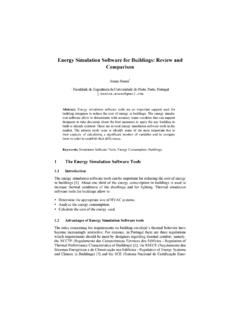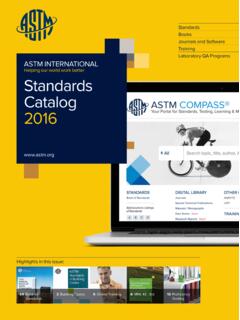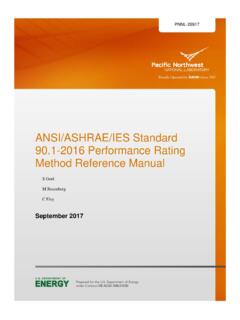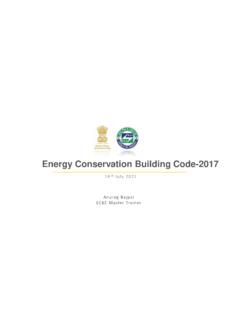Transcription of POST-DOCTORAL PROPOSAL
1 0 POST-DOCTORAL SUMMARY (138-150)..1 STATE OF THE ART (525-500)..1 OBJECTIVES (345-300)..2 WORK PLAN (387-1000)..3 REFERENCES (12-20)..4 1 POST-DOCTORAL PROPOSAL Simulating a new principle for retrieving electric energy from the sun J. Manuel Feliz-Teixeira November 2005 Summary (138-150) The present PROPOSAL aims to expose the actual interest of the author on developing a POST-DOCTORAL project in the area of the renewable energy, in particular the solar energy, with the main objective of studying a new principle he recently developed for retrieving electrical power from the sunlight. For this work the author has in mind to use advanced dynamic simulation techniques, which probably will include the 3D modelling of an interactive prototype of a possible machine.
2 Unlike what happens in most of the approaches recently in use for transforming solar energy into electrical power, the new principle is based on collecting the light energy by means of a differential macroscopic active process which seems to result in a quite interesting efficiency, at least compared with the 20% obtain with the best solar panels based on photovoltaic cells. State of the art (525-500) The present situation in Europe and in the world obviously represents a challenge to our ability for rethinking the energy producing systems, not only due to the new conscience spreading in our minds that the resources in which we have relied for a century are in reality finite, but also due to the fact that the creation of energy is since those times strongly based on destructive processes.
3 That is, the energy is obtained from sources that must be constantly destroyed, with a significant part of the results transformed into waste which is extremely aggressive both for our health and the equilibrium of the surrounding nature. In particular de European Union, by the directives of the European Commission, strongly started with the Campaign for Take-off (Li bard, 1999), is promoting the development of alternative and renewable energies, with the serious objective that these will reach 12% of energy consumption in the Union in the year 2010. In terms of solar systems directed to the production of electrical power, the most explored and installed systems are based on solar panels with photovoltaic cells, being Germany a leading country in this kind of investments and proposals (Li bard, 2000), with the active participation of the most prestigious solar institute of Europe, the Fraunhofer Institut, located in Freiburg-im-Breisgau, in the south of the country.
4 Apart from this technology, also the effect of POST-DOCTORAL PROPOSAL 2 furnace based on the concentration of the sunlight into small point or line focuses, by means of large cylindrical or spherical collectors, usually following the apparent movement of the sun, are employed in large power plants of solar energy. These systems are frequently used to quickly warm water and transform it in steam and then attack a steam engine, or in other cases to warm a gas under pressure that attacks a piston (see Wikipedia, 2005). But also mixed systems are being explored in order to increase the efficiency of the processes, as it is the case of thermo- photovoltaic systems, which use part of the thermal energy wasted by the photovoltaic panels to activate a cooler system which will then cool those panels and ensure that their efficiency will be maintained in a good level, since it decreases with the increase of temperature.
5 Another interesting although not so common approach is the solar tower , which operates based on the chimney effect observed in a long vertical tube. Even if this sort of systems usually need a huge space to operate, recently the British eco-architect Bill Dunster (see Dunster, 2002) was proposing, combined with photovoltaic panels, the use of a wind turbine enclosed in the vertical tunnel that makes the gap between four tower buildings shaped like a flower ( FlowerTower project), therefore turning the wind energy also usable in urban areas, as referred by Jamieson (2002). All over the world the renewable idea spreads as a concept related with the superior integration of humankind in its natural environment, and therefore it reaches almost all the domains and processes of consumption.
6 In particular China seems seriously decided to impose to itself this trend since it has established the concept of circular economy (IDRDC, 2005), later presented to the United Nations. Objectives (345-300) The work proposed here has the intention to contribute to the development of these ideals, knowing that systems of several types and configurations are being tested and studied in many institutions, and old concepts improved in efficiency, but that new principles of operation are obviously not so frequent. The work proposed here has as major objective the development and the test of a new principle to retrieve electrical energy from the sun.
7 This principle is based on a complete and closed circle of energy transfer, therefore creating no waste. Another interesting feature of it is that there is strong evidence that probably it will allow the design of solar machines from the centimetric or even millimetric dimensions, depending on the technology used, to the dimensions of a building, for example. Such structural versatility is leading the author to believe that a similar flexibility concerning the adaptation of this kind of systems to diverse conditions of operation can be expected. The idea, not yet published and for that reason not yet accessible for technical discussion, could already been tested in a small home made prototype with which the viability of the concept was recognized, but unfortunately with not enough detail to measure a real efficiency and observe the effectiveness of the entire dynamic process.
8 This was due to the lack of possibilities to build a complete prototype of a first experimental machine that could run J. Manuel Feliz-Teixeira 3 autonomously. The principle was observed to work properly, but the part related with its control was tested manually, and therefore the machine could not yet be seen to run in a standing alone mode. It is therefore a significant part of the objectives of this work to create a model of a first machine with which the principle can be finally tested. This will be done with the support of dynamic simulation techniques, probably including the creation of an interactive 3D prototype of a possible machine.
9 The final objective, however, is to turn public the principle and to give technical support to any institution that can demonstrate interest in developing it for industrial use. Work plan (387-1000) Being at this moment impracticable the establishment with accuracy of a detailed time plan for this project, since it strongly depends on the time availability of the persons and institutions that will be involved, a task plan will be instead presented with the most relevant tasks to be completed in order to achieve the project objectives. Some of these tasks will probably be running in parallel, and it is also intended to publish articles based on this work in international events, journals or magazines, whenever possible.
10 It makes part of the work plan to do (in brackets is the total time expected to be consigned to the task): 1- Literature review and the set up of an articles database. (3 months) 2- Contact with Professor Eugene Kindler from the Faculty of Mathematics and Physic, Charles University, Prague, Czech Republic, an expert in Object Oriented Computer Simulation, and one of the personalities that accepted to supervise this project, together with Professor Ant nio Brito from the University of Porto, Portugal, with the intent to discuss the mathematical and physical bases to model the new principle for retrieving electrical energy from the sun.













